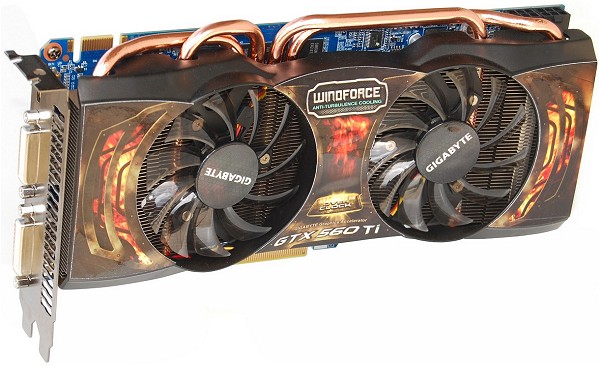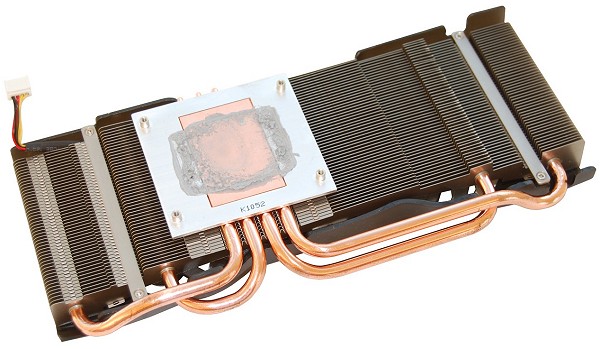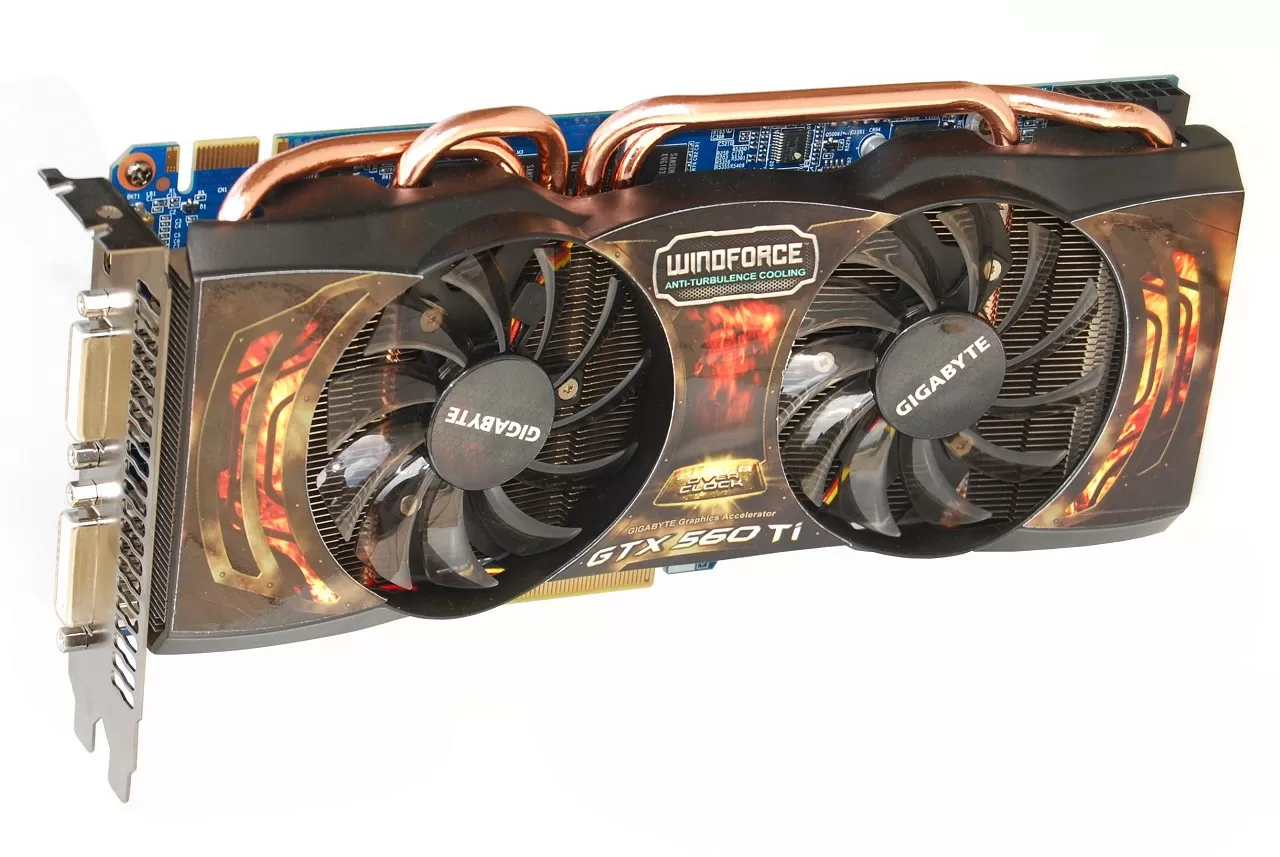Gigabyte GeForce GTX 560 Ti
With a suggested retail price of $250, the GeForce GTX 560 Ti is still considered a mainstream performance graphics card, costing roughly the same amount as the Radeon HD 6870. The card is ~$50 more expensive than the GeForce GTX 460 1GB and about $120 less than some Radeon HD 6970 cards.
Based on Fermi's third-generation Streaming Multiprocessor (SM) architecture, the GeForce GTX 560 Ti boasts 384 CUDA cores, which is 15% more shader power than the GeForce GTX 460. There are also 64 TAU (Texture Addressing Units) units, the same number used by the GeForce GTX 580, while the ROP (Raster Operations) have been decreased from 48 to 32.

Breaking it down, we have 2 Graphics Processing Clusters, 8 Streaming Multiprocessors, 384 CUDA Cores, 64 Texture Units and 32 Raster Operations Units. The graphics clock speed for fixed function units is set at 822MHz, 6% higher than the GeForce GTX 580, while shader frequency was increased by the same measure to 1640MHz.
The GeForce GTX 560 Ti is paired with 1024MB of GDDR5 memory clocked at 1002MHz (4008MHz DDR). Combine that with a memory interface of 256-bit and you get a peak theoretical bandwidth of 128GB/s, or 16% less bandwidth than the GTX 570 and 11% more than the GTX 460 (1GB).


Nvidia has slightly reduced the Thermal Design Power (TDP) rating of the GeForce GTX 560 Ti to 170 watts, down from the GTX 570's 219 watts. This represents a modest 22% drop and it will be interesting to see how well this new graphics card overclocks when prodded a little.


Other than the PCIe slot, much like other high performance cards, the GeForce GTX 560 Ti pulls power through a pair of external 6-pin PCIe power connectors. Nvidia recommends using at least a 550-watt power supply with this graphics card.
Nvidia's reference cooler has a small 70mm fan that blows air over a radial heatsink and forced out the rear of the card, exiting the case. The heatsink features four copper heatpipes which lead to another bank of fins that aid in the cooling process. This is the same design used by the GeForce GTX 460.

Nvidia's manufacturing partners such as Gainward, MSI, Palit and Gigabyte prefer to come up with their own designs. In the case of Gigabyte, we have a much larger heatsink that spans the entire length of the graphics card. Gigabyte has also employed a pair of 80mm fans instead of a single small fan.

The I/O plate of the GeForce GTX 560 Ti is identical to the GTX 570, featuring a vent across the top of the panel and a pair of DVI ports with a mini-HDMI port below.
